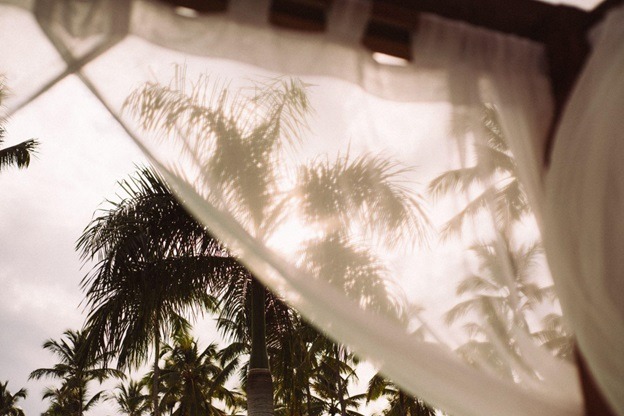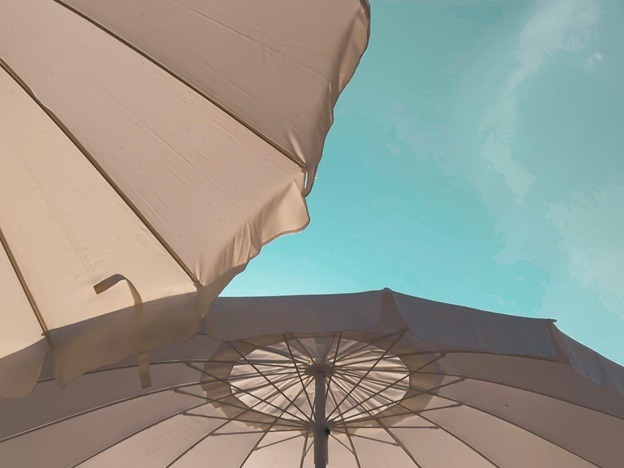Shade sails are sun-protective patio or deck covers made of durable outdoor cloth. A shade sail is attached to its support structure by stretching out the cloth and tying off each corner with adequate tension to hold it in place. As an alternative to a permanent roof, shade sails are popular due to their low cost and adaptability. Shade sails may be found in a wide range of sizes, colors, and forms, making them a versatile addition to any garden.
Shade sails are most useful for blocking the sun’s rays. The typical UV protection provided by a shade sail is 90-95%. While UV absorption might vary by as much as five percent depending on factors including shade fabric weight, color, and weave density, these variations are often not enough for a marked difference in protection. When it comes to blocking the sun’s rays, however, thicker fabric, a tighter weave, and darker hues tend to be the most effective.
Design and Performance
The most common materials for shade sails are synthetic nylon, PVC, and high-density polyethylene (HDPE). Installing them entails extending the fabric and affixing its corners to a sturdy structure, such as a roof, posts, wall, or tree, using stainless D-rings and carabiners on the shade structures to control the tension. Shade sails, when set up properly, may provide a tight canopy.
Shade structures are available in many different designs, but the most common are triangles, squares, and rectangles. The most common kind of sail is a triangular one. This is because, when water collects in the center of a square sunshade sail, the sail will bend. They lack the sophistication of their three-pointed relative. The triangular shape of the sails allows them to be used in a variety of configurations, from covering a tiny area to a much larger one.
Immunity to the Elements
Sun protection from shade sails should be as high as possible. Try to find textiles that have a UPF of at least 90%. Sunshade sails, like sunscreen, are used to shield you from the sun’s rays. Shade sails are constructed to endure the elements, including rain and wind, in addition to shielding from harmful ultraviolet (https://www.britannica.com/science/ultraviolet-radiationcts | Britannica) rays. In regions with severe winters, shade sails are best stored away until the weather warms up again.
Since HDPE is stretchable and breathable, it allows air and water to travel through without damaging the shade. Even though HDPE sails are resistant to rain, wind, and heat, they are not designed to keep you safe in a storm. As a precaution against severe weather, such as a hurricane or thunderstorm, you should lower your shade sails.
Shade sails made of PVC are less breathable yet completely waterproof. If you want to utilize your shade sail even if it rains, this is a good idea. In this instance, you should angle your sail so that it does not catch raindrops.
Sun Protection Sail Varieties
With shade sails, the sky’s the limit in terms of design. You may usually find them in one of three basic shapes: triangle, square, or rectangle. However, the potential permutations of design, installation method, and color are almost limitless. Even though they provide the least amount of shade, triangle shade sails are simple to fit into tight or unusually shaped areas. Using many shades at once is a great way to get full coverage or to amp up the UPF protection level.
Shade Sails: The Benefits
The optics of using a shade sail should be weighed carefully before making a purchase.
- Breathable fabric enables cool breezes to pass through the shade, lowering the temperature below by 15 to 20 degrees F.
- Provides protection from rain and ultraviolet rays
- Certainly less expensive than erecting a permanent structure.
An average shade sail may provide protection from the sun for eight to ten years. However, the local climate may have a significant impact on the actual lifespan of your shade. While certain shade sails may be able to withstand snow loads, prolonged exposure to snow may cause the cloth to expand and wear out. Most manufacturers advise storing your shade sail away during the winter in snowy regions.
An outdoor kitchen isn’t an ideal setup with shade sails. The cloth may be ruined by the high temperatures and the chemicals in the air. The same applies to cleaning agents for pools and spas, and those used to washing cars. If excessive chemicals are being used in an area, it will shorten the life of your shade structure by exposure.
Shade Sail Price Range
How much a shade sail will set you back depends on its dimensions and whether or not you want to set it up yourself. In most cases, a DIY project requires at least two people, and at least one of them has to have expertise in the field.


